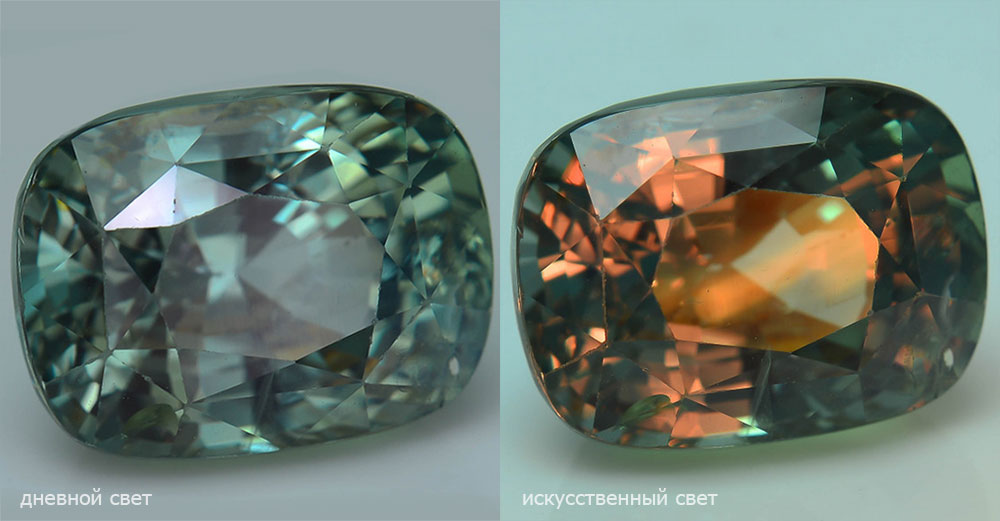Alexandrite gemstone
Home ➤ Encyclopedia of gems ➤ Alexandrite gemstonePhysical properties of alexandrite
| Hardness: | 8.5 out of 10 on the Mohs scale |
| Luster: | glass |
| Transparency: | transparent, translucent |
| Color: | in daylight - blue-green, bluish-green, grassy green, olive green; in evening or artificial light - pink-raspberry, red-violet, purple |
Characteristics of alexandrite
Alexandrite (Ural chrysoberyl, Russian prophetic stone) is one of the most amazing gemstones. Because of its unique ability to change color under different lighting conditions.
The Finnish mineralogist Nils Nordenskiold, who discovered the alexandrite mineral in 1834 (there are, however, versions that alexandrites were known earlier in India), noticed that in the light of a candle this gem suddenly turned dark red, although it had a green color in the sun. However, there are alexandrites and an almost transparent or bluish hue in daylight and raspberry and violet-red in artificial light. And yet, the main difference between alexandrite and other precious stones lies precisely in the unusual ability to change its color under different lighting conditions.

The alexandrite received its name in honor of the Emperor of Russia Alexander II in 1842 (at that time, however, Alexander was only a crown prince, who had just come of age).
For a long time, alexandrite was mined only in Russia in the Urals, which is why it even received a separate name "Ural chrysoberyl", but then this gem was discovered outside of Russia.
How much does alexandrite cost
Alexandrite is a rare and expensive gemstone, and is valued even higher than the finest gemstones such as diamonds, rubies, or emeralds. The price even for small alexandrites no more than 1 carat can reach from 500 to 10,000 dollars per 1 carat. And large alexandrites are sold only through world auctions. A 2-carat alexandrite ring will cost at least $3,000 or even more.
Even synthetic alexandrites, due to the complexity of production, will cost at least $20 per 1 carat.
For alexandrite, natural stones are often given out, which have an optical effect similar to alexandrite - corundum, garnets, tourmalines.
For a long time, the unique quality of alexandrites was also a kind of method for checking a stone for originality, but in the 20th century, people learned how to make artificial stones that changed color like real alexandrites.
| ★ Rhinestone | |
| See also: | ★ Diopside gemstone |
| ★ Moonstone gemstone |





